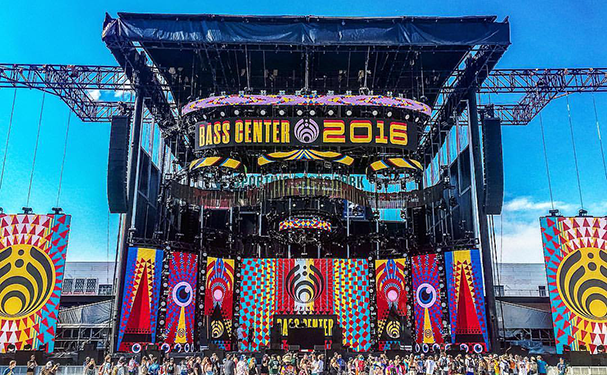Brown Note Productions featured for use of d&b audiotechnik at Bass Center 2016
From FOH Online
DENVER — Bassnectar filled the stadium that is home to the Colorado Rapids soccer team in the Denver suburb of Commerce City with its EDM beat on July 30. Brown Note Productions supported the concert with a d&b audiotechnik sound system for some 24,000 attendees.
Bassnectar recently said in an interview: “We have an enormous sound system, it’s bigger (by far) than anything that would be put in this venue. We didn’t get it so that we could blast people’s ears, we got it because we wanted to evenly distribute it to 24,000 people.” Brown Note Productions of Denver interpreted Bassnectar’s sound specification when it came to enhancing audio at a major league soccer stadium for Bassnectar’s performance.
A recent review in the Huffington Post (Aug. 8, 2016) lays to rest the myth that the EDM market is fixated only on loudness.
In the interview with reporter Shawn Russell Johnson, event organizer and headline performer, Bassnectar said: “We have an enormous sound system, it’s bigger (by far) than anything that would be put in this venue. We didn’t get it so that we could blast people’s ears, we got it because we wanted to evenly distribute it to 24,000 people. I was in the back of the stands for sound check and it felt like you were at the front of the rail, and getting that kind of spread is really important.”
Just how well that was achieved is a measure of how effectively Brown Note Productions Inc. of Denver interpreted Bassnectar’s sound specification when it came to assessing Dick’s Sporting Goods Park, a major league soccer stadium in nearby Commerce City.
“This stadium is home turf for the Colorado Rapids,” says Ryan Knutson, president at Brown Note and audio project manager for this event. “Fairly intimate as stadiums go, it was not too tricky in terms of mapping coverage when we input the physical data. From where the stage was positioned it’s approximately 360 feet to the stands. Aiming and ensuring even coverage in d&b’s ArrayCalc was easy; it came up nicely. The original specification was all d&b audiotechnik loudspeakers, mainly J-Series and V-Series for the heavy lifting, and called for long arrays of J-Series in the mains L/R; but when we modelled it we saw it would be too much, so we reduced it by a couple of cabinets a side.
“This was important as we were implementing ArrayProcessing (AP) to meet Bassnectar’s desire for front row experience at every seat without, as he said, blasting people’s ears. Several factors in the d&b toolkit allowed us to do that with great success.”
Brown Note are a big d&b stockist; their experience with these systems proved important. “Bassnectar was aware of the reputation of this d&b system and he specified the relatively new D80 amps in particular because of the performance improvements they bring. Because of that we were able to recommend using AP. In our experience, and we have done a number of shows for him over the years, Bassnectar always strives for his audience. They are critical listeners and he is very particular to ensure they get to hear great sound, not just loud.”
The ability of ArrayProcessing to produce even level and the distinct d&b tonality across the whole listening area is now well documented, but Knutson and his system tech Chris Chierello went further in their attention to the low end propagation.
“We had over 80 subs, a mix of J-SUBs and J-INFRAs in cardioid mode in front of the main stage,” continues Knutson. “The array was 120 feet across enabling us to easily control horizontal dispersion down into the 20 Hz range. That was part of our approach to ensuring we minimized the noise escape to the surrounding residential districts.
“Nick Malgeieri from d&b’s EAS department worked with me on the NoizCalc model, allowing us to predict where sound energy could become problematic outside the venue. When we came to measure levels at the property line beyond the stadium it was exactly as predicted. More importantly it met all the permit requirements for events at this venue. Using so many subs allowed us to create a more even coverage and use lower SPLs within the listening area.
“Because of that, the main sub array and a further sub delay array of B22-SUBs halfway down the field, barely ever went into gain reduction. That fundamental low end, usually around 27/28 Hz that Lorin (Ashton, Bassnectar’s real name) likes in his mix, was what the audience heard and it was really clean because we weren’t having to drive too hard.”
Bassnectar’s shows are characteristically an all-enveloping experience; the intimacy of a club but on a huge scale. As he himself concluded in the Johnson interview: “It’s a massive undertaking, and everyone on the team has that same kind of vision: that we’re hell-bent on delivering total A-plus above and beyond quality. Just because we want to, not because we have to.”


